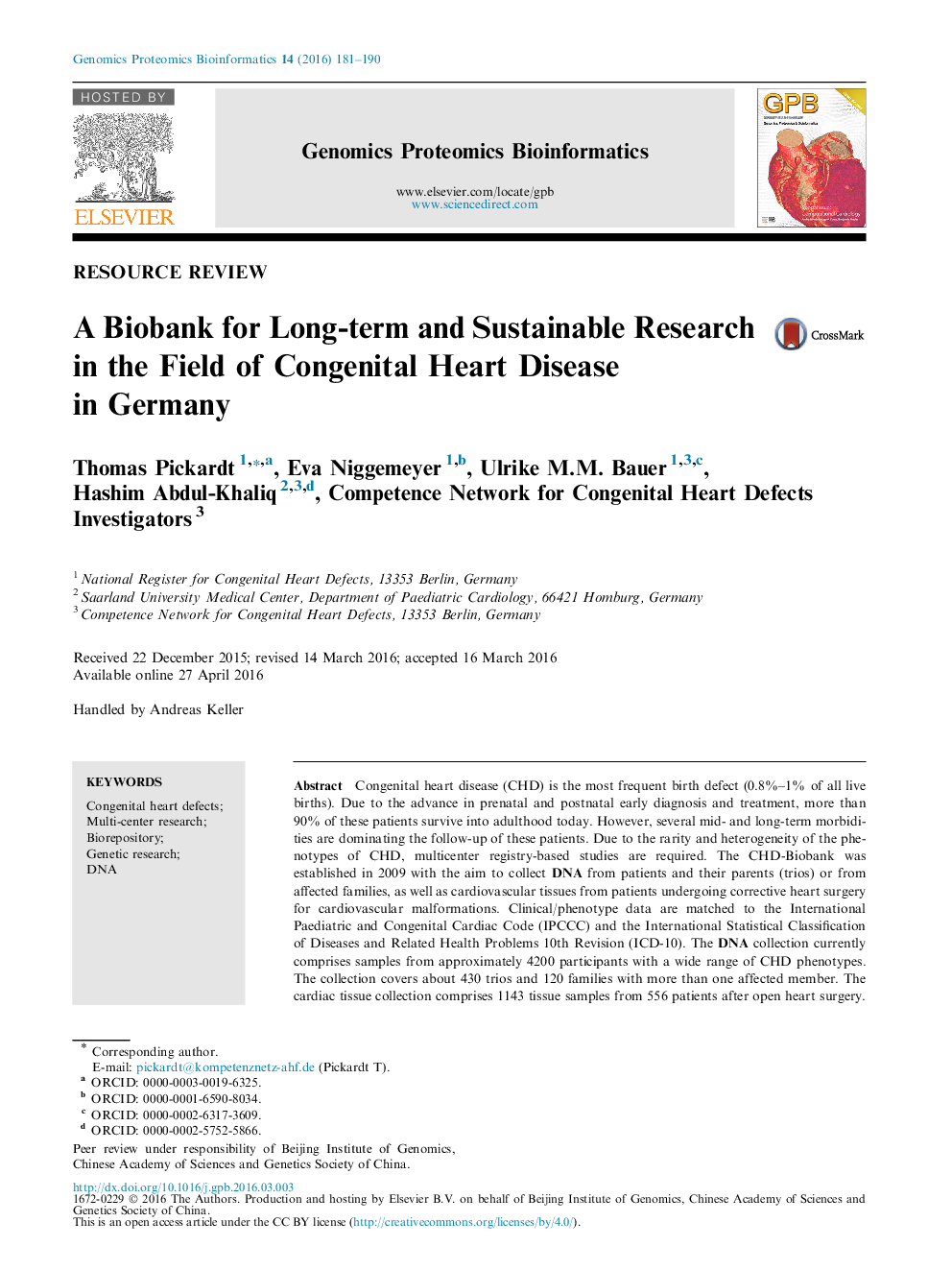| Article ID | Journal | Published Year | Pages | File Type |
|---|---|---|---|---|
| 2822354 | Genomics, Proteomics & Bioinformatics | 2016 | 10 Pages |
Congenital heart disease (CHD) is the most frequent birth defect (0.8%–1% of all live births). Due to the advance in prenatal and postnatal early diagnosis and treatment, more than 90% of these patients survive into adulthood today. However, several mid- and long-term morbidities are dominating the follow-up of these patients. Due to the rarity and heterogeneity of the phenotypes of CHD, multicenter registry-based studies are required. The CHD-Biobank was established in 2009 with the aim to collect DNA from patients and their parents (trios) or from affected families, as well as cardiovascular tissues from patients undergoing corrective heart surgery for cardiovascular malformations. Clinical/phenotype data are matched to the International Paediatric and Congenital Cardiac Code (IPCCC) and the International Statistical Classification of Diseases and Related Health Problems 10th Revision (ICD-10). The DNA collection currently comprises samples from approximately 4200 participants with a wide range of CHD phenotypes. The collection covers about 430 trios and 120 families with more than one affected member. The cardiac tissue collection comprises 1143 tissue samples from 556 patients after open heart surgery. The CHD-Biobank provides a comprehensive basis for research in the field of CHD with high standards of data privacy, IT management, and sample logistics.
